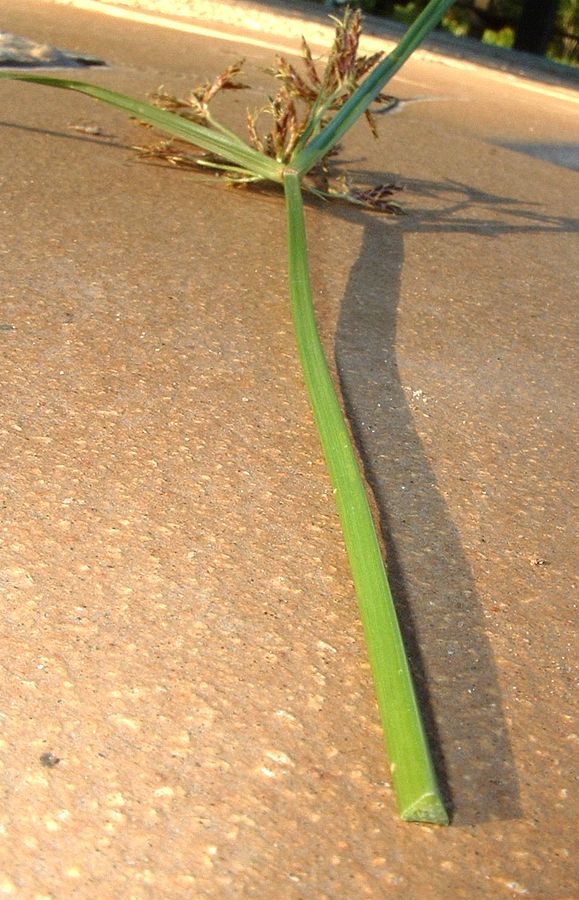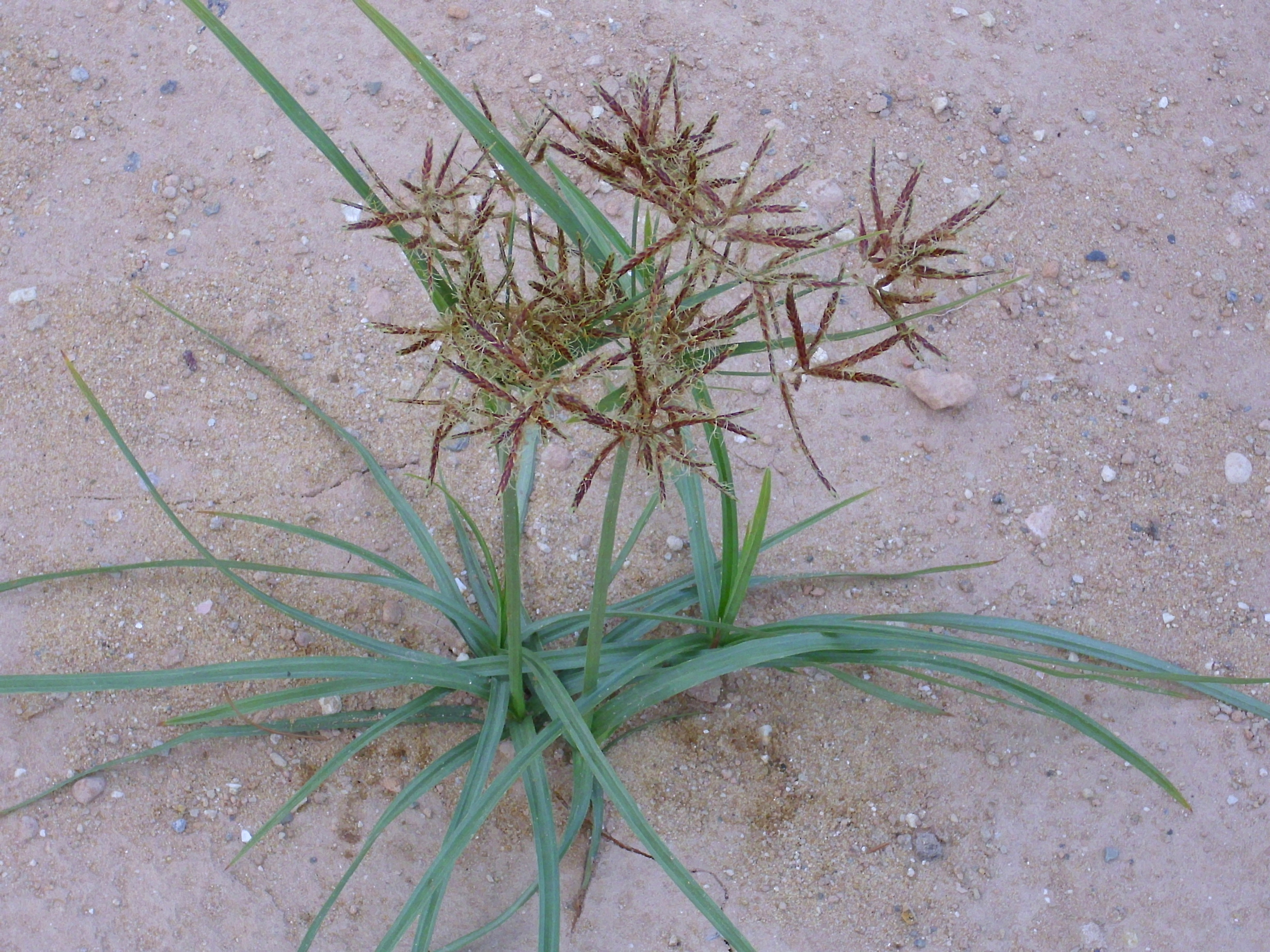Purple Nutsedge

Purple Nutsedge
(Cyperus rotundus)
Priority: - Prevent / EDRR
Tags: Agricultural | Terrestrial
Identification and Reproduction
Identification:
- Purple nutsedge is a perennial sedge that can reach up to 1 m tall.
- Stems are smooth, triangular and long.

- Leaves are attached at the basal portion of the stem. They have a distinct mid-rib and taper to a point.
- Flowers are found in a umbel-like cluster and are purple to brown in colour. There are also short leaf-like bracts under the flower clusters.
Reproduction:
- Reproduces from tubers that store food that will help it complete its life cycle the following year.
- Tubers can also remain dormant in the soil and then when conditions are favourable they will establish new plants.
- Any tubers that are left in the ground will resprout.
Habitat & Ecology
- It is well adapted to moist and sandy conditions, but prefers drier conditions.
- Shade intolerant.
- Purple nutsedge has been observed a various sites including cultivated fields, roadsides, pastures, riverbanks, sandbanks, irrigation channels and wastelands.
- Currently it has yet to be found in BC, but purple nutsedge nutlets have been found in imported ornamental nursery stock.
Impacts
Social:
- They invade turf, landscape areas, pastures and cultivated fields.
- Reduces crop yields.
- Extremely competitive and will take up space and nutrients rapidly. Crop species will be negatively impacted.
Ecological:
- Displace native vegetation.
- Will deplete nutrients from the soil and store them in its tubers.
Management
Prevention is a high priority for this plant.
- Use clean seed, hay, grain and straw.
- Maintain a healthy pasture and good crop cover to reduce ground exposure.
- Contact the Canadian Food Inspection Agency (CFIA) if you think you have seen this plant.
Resources
Download A Guide to Weeds in British Columbia for Purple Nutsedge here.
For more details check out the Invasive Species Compendium datasheet on Cyperus rotundus (purple nutsedge).
Header photo (Jeevan Jose)



